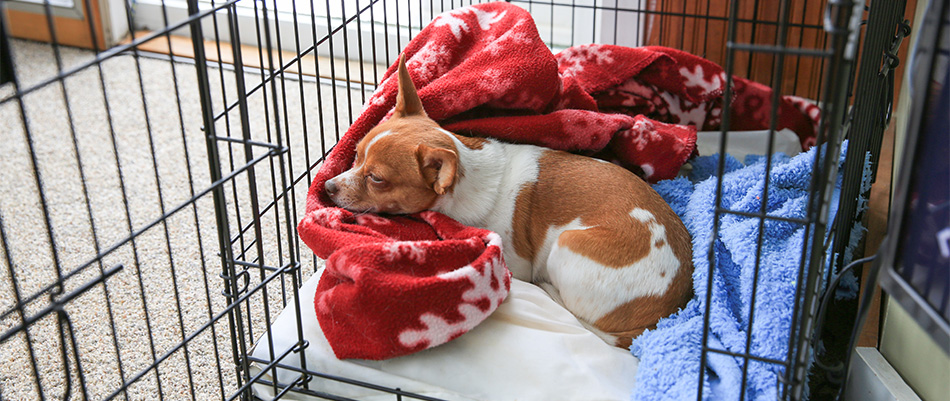Benefits of Crate Training Your Dog

Many people refuse to crate or kennel-train their dogs because they feel the confinement is cruel. However, a crate or kennel can give dogs a sense of security. Crate training done properly is also a highly effective management system that can be a lifesaver for dog owners. Like any training method, crating can be abused, but using a crate for appropriate time periods is helpful with a variety of important goals, including house training, preventing destructive behavior, and teaching a dog to settle and relax.
The Crate Can Become a Safe Haven for Your Dog
If a dog is taught through positive reinforcement to love the crate, the crate then becomes his own private safe haven, much like a bedroom for a child. The crate or kennel is somewhere that your dog can go and not be bothered, which is the perfect solution when your dog is tired or nervous. Being that dogs are natural den animals, they often will take to a crate very easily with the proper training.
Crate Training Benefits
What can crate training do for you? Plenty. The benefits of crate training extend to both you and your dog.
- A crate that is sized properly encourages a dog’s instinct not to mess where he sleeps, helping your dog control his bladder – and preventing you from cleaning up after them. So, basically the crate is like a super duper house training tool.
- Using a crate is a great way to keep your dog from getting into mischief when you can’t supervise them directly. If you are busy cooking, doing some work from home, or any other time that your attention is elsewhere, it can be the perfect time for your dog to spend some down time in their crate.
- Speaking of down time, crate training is a good way to train your dog to expect and enjoy time alone and conditions relaxed behavior. Once your dog is properly trained, he will come to appreciate the time spent in the crate.
Choosing the Right Crate
There are many varieties of crates out there to choose from and it can be a bit overwhelming at first trying to decide on which crate is right for your dog. The most common crate varieties are wire crates, plastic crates, and fabric crates.
- Fabric crates are recommended more for travel use than for long-term, unsupervised confinement.
- The best crates to have in your home are usually the plastic or wire crates. These crates are sturdier and are best for long-term confinement.
The other thing to consider when choosing a crate for your dog is the size of the crate. Some people are inclined to choose a large crate to give their dog lots of room. However, if you pick a crate that is too large in size, your dog may use a portion of the crate as a toilet.
- You want to pick a crate that is just large enough for your dog to stand up, make a complete turn, and lay back down comfortably.
Make the Crate a Happy Place
A dog should always be introduced to a crate gradually. Forcing your dog too quickly into crate training can backfire. The ultimate goal is to make the crate a happy place for your dog. So, how can you do that?
- Start placing some of your dog’s favorite items into the crate, leaving the door open for him to come in and out. For example, toss a treat into the crate and allow your dog to go in and get the treat at his own pace.
- Place your dog’s favorite toys or toy basket into the crate and allow your dog to go in to retrieve the toys.
- At feeding time, place your dog’s food bowl in the crate and allow him to eat in his new safe haven.
Be consistent in doing these things and allowing your dog to become acclimated to his crate at his own pace. It is also a good idea to place a favorite bed or blanket into the crate to make things more familiar to him. Once you get your dog properly crate trained, you will wonder how you {or your dog} ever lived without it. Don’t take our word for it – start the crate training process with your dog today!




